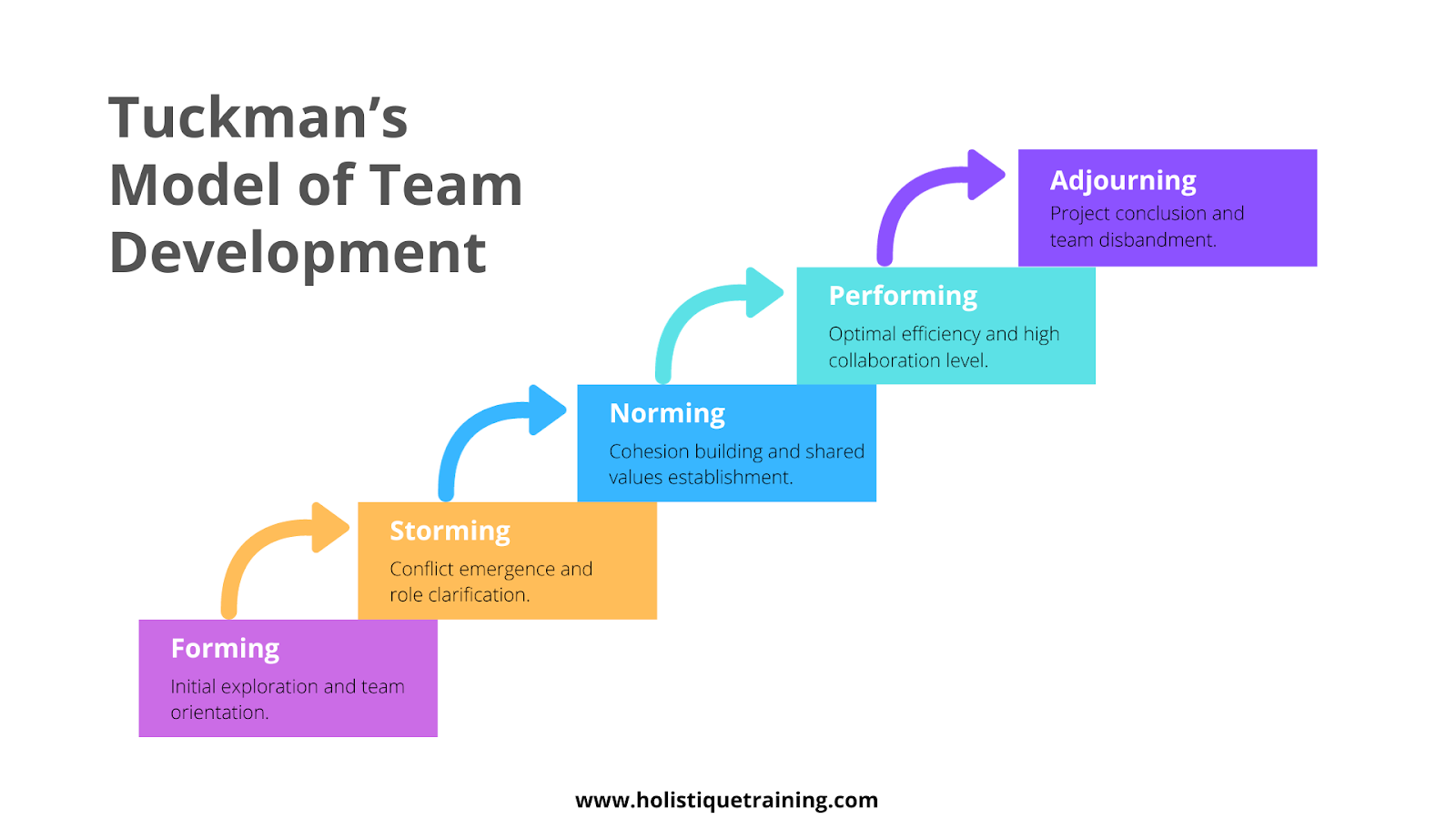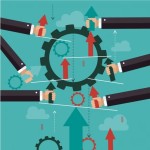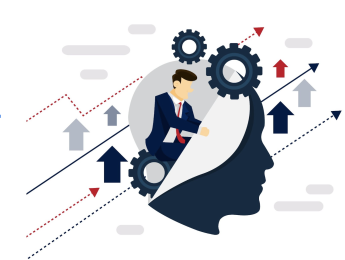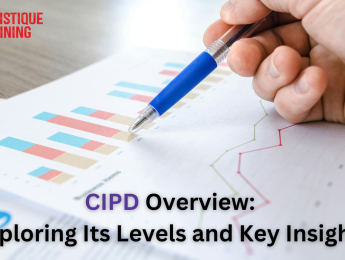- Table of Contents
- Introduction
- What Is Agile Team Development?
- Tuckman’s Model: Definition & History
- A Timeless Beacon
- What Are the Stages of Tuckman’s Model in Agile?
- 1. Forming
- 2. Storming
- 3. Norming
- 4. Performing
- 5. Adjourning (or Mourning)
- Why Is Tuckman’s Model Important?
- Predict Team Dynamics
- Facilitate Effective Communication
- Encourage Continuous Improvement
- Optimise Team Productivity
- Navigate Team Challenges
- Build Trust and Cohesion
- Enhance Team Effectiveness
- What Do the Statistics Say When It Comes to Agile Teams?
- How to Apply Tuckman’s Model to Build Efficient Teams
- 1. Leadership and Guidance in Forming
- 2. Conflict Resolution in Storming
- 3. Collaboration and Culture in Norming
- 4. Empowerment and Adaptability in Performing
- 5. Reflection and Recognition in Adjourning
- Conclusion
Introduction
Creating and sustaining high-performing teams in today's professional world's dynamic landscape is a challenge organisations grapple with continuously. As businesses increasingly adopt agile methodologies to stay nimble and responsive, understanding the intricacies of team development becomes paramount. One theory that stands out in this context is Tuckman's Model, a timeless framework that elucidates the stages teams go through to achieve optimal functionality. In this comprehensive exploration, we will delve into the depths of Tuckman's Model, tracing its origins, understanding its stages, and unravelling its significance in the realm of agile team development.
What Is Agile Team Development?
Agile team development is not merely a buzzword; it's a paradigm shift in how teams collaborate and adapt to change in the ever-evolving business landscape. Agile approaches prioritise flexibility, collaboration, and responsiveness, unlike traditional waterfall methodologies. Agile teams embrace change as a constant, fostering a culture that values individuals and interactions over processes and tools. Successful agile teams seamlessly navigate through tasks, embracing iterative cycles and learning from each iteration to continuously enhance their performance.
Tuckman’s Model: Definition & History
Developed by psychologist Bruce Tuckman in 1965, Tuckman's Model, formally known as the Tuckman's Stages of Group Development, has endured as a foundational framework in the realm of team dynamics. Tuckman's initial model delineated four stages: forming, storming, norming, and performing. However, recognising the importance of acknowledging the conclusion of a team's life cycle, Tuckman later introduced a fifth stage, adjourning (or mourning), in 1977. This expansion underscored his holistic understanding of team development, recognising that the end of a project or phase merits its own considerations, such as reflection and closure.
Tuckman's Model emerged from his keen observations of various groups, ranging from small teams to large organisations. Rooted in empirical research and psychological principles, the model is a testament to Tuckman's deep insight into the dynamics of human interactions within collaborative settings. Over the years, Tuckman's Model has been widely adopted in psychology, organisational development, management, and particularly within the agile methodology. Its enduring relevance attests to its adaptability and applicability across diverse contexts, making it a timeless guide for teams navigating the complexities of group dynamics in the pursuit of excellence.
A Timeless Beacon
In the agile landscape, Tuckman's Model assumes renewed significance. Agile methodologies emphasise flexibility, collaboration, and iterative development—values inherently aligned with Tuckman's insights. The model offers agile teams a structured lens through which they can view and understand their evolution. By recognising the predictable patterns of forming, storming, norming, performing, and adjourning, agile practitioners can strategically apply Tuckman's principles to foster resilience, cohesion, and high performance.
Moreover, Tuckman's Model serves as a bridge between the theoretical and the practical in agile settings. Its historical underpinnings, grounded in Tuckman's meticulous observations, provide a solid foundation for agile practitioners seeking a deep understanding of team dynamics. As agile methodologies continue to shape the modern work landscape, Tuckman's Model stands as a historical landmark and a timeless beacon, guiding agile teams toward efficiency and excellence in the ever-evolving landscape of collaborative work.
What Are the Stages of Tuckman’s Model in Agile?
In the agile landscape, where change is the only constant, understanding the stages of Tuckman's Model is akin to possessing a treasure map for navigating the complex terrain of team development. Each stage presents unique challenges and opportunities, and agile teams must adeptly traverse them to reach their full potential.
1. Forming
In the forming stage, the agile team is in its infancy, like a blank canvas waiting for the first brushstroke. Team members, often unfamiliar with one another, embark on a journey of exploration. This phase involves defining project scopes, understanding goals, and establishing initial team dynamics. In agile terms, forming may include selecting the appropriate framework, setting up communication channels, and establishing the groundwork for collaboration.
The key here is leadership—a guiding hand that sets the tone for the team's journey. Agile leaders must strike a delicate balance, providing structure and clarity without stifling team members' creativity and input. Encouraging open communication and setting clear expectations help create a solid foundation for the team to build upon.
2. Storming
As the team delves into the actual work, the storming stage emerges. Conflicts surface, differences in opinions become apparent, and individual personalities assert themselves. In agile, storming can manifest as disagreements over methodologies, tools, or even the project's direction.
Effective leadership is paramount during the storming phase. Agile leaders should recognise that conflict is a natural part of the process and should not shy away from it. Instead, they should guide the team through these conflicts, encouraging open dialogue and ensuring diverse perspectives are heard and valued. When managed well, storming becomes a crucible for forging a stronger, more resilient team.

3. Norming
With conflicts resolved, the norming stage sees the emergence of a more cohesive unit. Norms and values that guide the team's behaviour start to solidify. In an agile setting, this phase involves refining processes, establishing collaboration patterns, and building a shared understanding of goals and expectations.
Agile leaders play a crucial role in nurturing this cohesion. By reinforcing the importance of teamwork, setting clear expectations, and promoting a culture of mutual respect, leaders help the team transition from a group of individuals with varying perspectives to a unified force with a shared mission.
4. Performing
The performing stage is the culmination of the team's journey – a phase where the team operates at peak efficiency. Agile teams in this stage are characterised by high collaboration, adaptability, and the ability to deliver high-quality results consistently. The focus shifts from individual contributions to cohesive teamwork, and members trust each other to achieve common objectives.
In the agile realm, performance involves the team seamlessly navigating through iterations, learning from each cycle, and applying those lessons to enhance their performance. At this stage, agile leaders empower team members, provide the necessary support, and ensure that the team remains focused on continuous improvement.
5. Adjourning (or Mourning)
The adjourning stage, also known as mourning, marks the conclusion of a project or a phase. Agile teams take the time to reflect on their achievements, learnings, and areas for improvement. This stage is vital for celebrating successes, recognising individual and collective contributions, and conducting a thorough retrospective.
In the agile context, adjourning is not just an end but a transition. It sets the stage for future projects, allowing teams to carry forward the lessons learned and continually evolve. Agile leaders facilitate this reflective process, ensuring the team leaves a project with deliverables and a wealth of experience contributing to their growth.
Understanding and navigating these stages in the agile adaptation of Tuckman's Model is a dynamic and iterative process. Armed with this knowledge, Agile teams can navigate the complexities of team development with grace, adaptability, and a collective commitment to excellence.
Why Is Tuckman’s Model Important?
Tuckman's Model provides a roadmap for team development, offering valuable insights for leaders and team members alike. Understanding the stages helps teams anticipate challenges, navigate conflicts, and foster an environment conducive to high performance. In the agile context, where adaptability and collaboration are paramount, Tuckman's Model is a guiding light for teams striving to achieve and sustain excellence.
The model's significance lies in its ability to:
Predict Team Dynamics
Understanding the stages outlined in Tuckman's Model allows leaders and team members to predict and anticipate the natural evolution of team dynamics. By recognising the predictable patterns of forming, storming, norming, performing, and adjourning, agile teams can be better prepared to navigate challenges that might arise during each phase. This foresight enables proactive problem-solving and minimises the impact of potential disruptions.
Facilitate Effective Communication
Communication is the lifeblood of any successful team, and Tuckman's Model emphasises the importance of clear and open communication at every stage. Agile teams can leverage this insight to establish communication channels to encourage transparency and collaboration. Leaders can foster an environment where team members feel comfortable expressing their ideas, concerns, and feedback, thereby building trust and cohesion.
Encourage Continuous Improvement
Agile methodologies inherently embrace a culture of continuous improvement, and Tuckman's Model aligns seamlessly with this ethos. By recognising the iterative nature of team development, agile teams can continuously refine their processes, learn from experiences, and evolve. Each stage becomes an opportunity for reflection and enhancement, ensuring the team strives for higher efficiency and effectiveness.
Optimise Team Productivity
Tuckman's Model assists in optimising team productivity by providing a framework for leaders to tailor their approach at each stage. Leaders can adjust their management style, focus, and expectations based on the team's current developmental phase. This adaptability ensures that the team's energy is directed towards productive outcomes, minimising friction and maximising efficiency.
Navigate Team Challenges
Every team encounters challenges, be it interpersonal conflicts, role ambiguities, or workflow issues. Tuckman's Model serves as a compass, guiding leaders and team members through the stormy seas of team challenges. By acknowledging that conflicts are a natural part of the journey and can be resolved constructively, agile teams can transform challenges into opportunities for growth and strengthened collaboration.
Build Trust and Cohesion
Trust is the cornerstone of any successful team, and Tuckman's Model provides a blueprint for building and sustaining trust. Leaders can use the model to create an environment where team members feel safe expressing themselves, taking risks, and contributing their unique skills. As the team progresses through the stages, the bonds of trust and cohesion strengthen, fostering a sense of unity and shared purpose.
Enhance Team Effectiveness
Ultimately, the overarching importance of Tuckman's Model in agile team development lies in its contribution to team effectiveness. By navigating through the stages with an understanding of the model, teams can achieve and sustain a state of peak performance. The model becomes a tool for leaders to guide their teams towards success, promoting an environment where innovation, collaboration, and continuous improvement flourish.
In conclusion, Tuckman's Model isn't just a theoretical framework—it's a dynamic, practical guide that empowers agile teams to navigate the complexities of team development. Its importance lies not only in its historical significance but in its enduring relevance as a beacon for teams striving not just to survive, but to thrive in the face of change and uncertainty.
What Do the Statistics Say When It Comes to Agile Teams?
According to Radix, Agile outperforms models like Waterfall and Iterative, boasting a 1.5x higher success rate. Remarkably, 80% of respondents prefer Agile within their organisations. Also, in a compelling statistic from 2023, as cited by Echometer, 98% of companies attest to the transformative impact of Agile adoption. This resounding success drives the increasing trend of Fortune 500 companies embracing Agile methodologies within their organisational frameworks. To dive deeper, research conducted by McKinsey and Co. underscores the undeniable advantages of Agile methodologies. In contrast to non-agile counterparts, Agile organisations revealed significant improvements, with 93% reporting enhanced customer satisfaction, 76% reporting elevated employee engagement, and 93% reporting superior operational performance.
How to Apply Tuckman’s Model to Build Efficient Teams
Applying Tuckman's Model effectively in an agile context requires a nuanced understanding of each stage and a commitment to agile principles. Here are some actionable steps to foster efficient teams using Tuckman's Model:
1. Leadership and Guidance in Forming
Forming is the genesis of a team's journey, akin to a delicate seedling breaking through the soil. Agile leaders must assume a role akin to a nurturing gardener, providing the right environment for the team to flourish. Clear and decisive leadership is essential. Leaders should set the tone by articulating the project's vision, defining roles, and creating an atmosphere that encourages open communication.
Actionable Steps:
- Set Clear Expectations: Clearly define the project's scope, goals, and individual roles. This sets the groundwork for the team's journey.
- Encourage Individual Input: Create an environment where team members feel empowered to share their skills, experiences, and expectations. This inclusivity fosters a sense of ownership.
2. Conflict Resolution in Storming
Storming can be a tumultuous phase where conflicts arise, and divergent opinions clash. Rather than viewing this stage as a hindrance, agile leaders should see it as an opportunity for growth. Effective conflict resolution ensures that disagreements are addressed constructively, creating a more cohesive and resilient team.
Actionable Steps:
- Facilitate Open Dialogues: Create forums for team members to express their concerns and opinions. Encourage active listening to ensure that all perspectives are considered.
- Guide Towards Consensus: Leadership is crucial in guiding the team towards consensus. Help the team find common ground and build a shared vision.
3. Collaboration and Culture in Norming
During norming, the team solidifies collaboration patterns and builds a shared understanding of goals. Agile leaders are pivotal in nurturing a culture of transparency, accountability, and mutual respect. This is the phase where norms and values that guide the team's behaviour begin to take root.
Actionable Steps:
- Reinforce Teamwork: Emphasise the importance of teamwork over individual contributions. Celebrate collaborative achievements and recognise the power of collective effort.
- Promote Accountability: Encourage team members to take ownership of their tasks and responsibilities. A culture of accountability ensures that everyone is committed to the project's success.
Metrics | Description | Key Insights |
Team Velocity | Measure team's output and progress. | Assessing productivity and iteration success. |
Retrospective Feedback | Gather insights for continuous improvement. | Identifying areas for team enhancement. |
Cycle Time | Track time from idea to product release. | Analysing efficiency and time management. |
Sprint Burndown | Monitor completion of planned tasks. | Ensuring alignment with project timelines. |
Team Satisfaction | Assess team members' engagement and morale. | Gauging the overall team well-being. |
Table 1: Metrics to Measure the Effectiveness of Agile Team Development
4. Empowerment and Adaptability in Performing
Performing is the stage where the team operates at peak efficiency. Agile leaders in this phase should empower team members to make decisions, experiment with different approaches, and learn from failures. The focus shifts from guidance to support, as the team demonstrates high levels of collaboration and adaptability.
Actionable Steps:
- Empower Decision-Making: Give team members autonomy to make decisions that align with the project's goals. Empowered teams are more adaptable and resilient.
- Foster a Learning Culture: Emphasise the importance of continuous learning. Celebrate successes and encourage the team to reflect on and learn from failures.
5. Reflection and Recognition in Adjourning
Agile leaders guide the reflective process as the team enters the adjourning stage. This stage is not just about the end of a project but about recognising and celebrating the journey. Effective leaders ensure team members leave with a sense of accomplishment, lessons learned, and a positive outlook toward future endeavours.
Here’s what you could do:
- Conduct Thorough Retrospectives: Facilitate retrospectives where the team reflects on what worked well, what could be improved, and lessons learned. This reflection informs future projects.
- Celebrate Achievements: Recognise individual and collective contributions. Celebrate the team's successes, reinforcing a positive team culture.
Applying Tuckman's Model to foster efficient teams in the agile context is a dynamic and adaptive process. With an understanding of the model's intricacies, Agile leaders become adept navigators, guiding their teams through the stages with finesse and purpose. By tailoring their approach at each phase, leaders can create an environment where efficiency, collaboration, and continuous improvement become ingrained in the team's DNA. When applied with intention and sensitivity, Tuckman's Model transforms from a theoretical framework into a practical tool for building and sustaining high-performing agile teams.
Conclusion
In the intricate dance of agile team development, Tuckman's Model emerges as a guiding force, offering insights into the stages teams traverse on their path to efficiency and excellence. Understanding the nuances of forming, storming, norming, performing, and adjourning empowers agile leaders and team members to navigate challenges, build trust, and continuously evolve. As organisations increasingly embrace agility to stay ahead in a fast-paced world, the timeless wisdom of Tuckman's Model remains invaluable in fostering teams that survive and thrive in the face of change.
In your quest to master the intricacies of agile team development, our specialised course, ‘Change & Complexity Management,’ stands as the perfect companion. Delve deeper into the dynamic world of team dynamics, utilising Tuckman's Model as a cornerstone. Our course goes beyond theory, providing hands-on insights and actionable strategies for leaders and team members alike. Learn to navigate the challenges of forming, storming, norming, performing, and adjourning and leverage these stages for transformative growth. Equip yourself with the tools to survive change and thrive amidst complexity. Enrol today and lead your teams to unparalleled efficiency and excellence in the ever-evolving landscape of agile development.
























